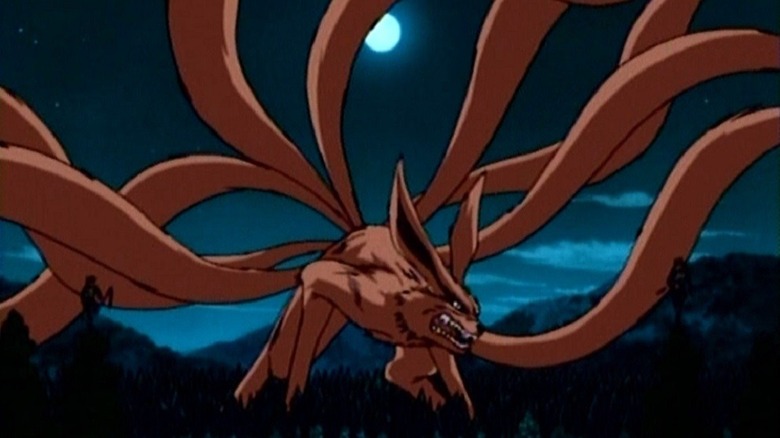Is Naruto's Nine-Tailed Fox Based On Real-Life Folklore?
Even if you're not into anime, chances are you've still heard of "Naruto," the hit show based on Masashi Kishimoto's manga of the same name. A series that barely needs an introduction, "Naruto" was serialized for over a decade. It has spawned video games, countless pieces of merchandise, and a popular spin-off sequel titled "Boruto," which follows the son of the franchise's protagonist.
Like many other highly popular shonen series, such as "Dragon Ball" and "Bleach," the "Naruto" franchise is full of elements inspired by Japanese culture, both historical and mythological. In an interview with Viz Media, Kishimoto called his most famous work "a very Japanese manga," referring to how some features may be more difficult for a foreign audience to grasp. Nevertheless, it fills the mangaka with happiness to know that people outside of Japan have enjoyed his magnum opus, despite its heavy reliance on a different culture.
There are plenty of parts of "Naruto" that nod to Japanese culture, but is the Nine-Tailed Fox based on real-life folklore? Read on to find out.
The mythological origin of the nine-tailed fox
The source of inspiration for Kurama — the nine-tailed fox that is sealed inside Naruto at the beginning of the series — does indeed come from traditional Japanese folklore. Fox spirits are prevalent in Eastern Asian cultures and mythology, given different names depending on the country. In China, the nine-tailed fox is known as Huli Jing, while in Korea, it's referred to as Kumiho. In Japan, the nine-tailed fox spirit goes by the name Kitsune.
Kitsune are associated with deviousness and trickery, not too dissimilar to the symbolic connotations of foxes in some Western cultures. However, whether kitsune are viewed in a positive or negative light changes from tale to tale. "He is regarded in Shinto lore as the messenger who ensures that farmers pay their offerings to the rice god," says Britannica. "Buddhist stories, however, cast the fox as an evil agent of possession."
The notion of kitsune having nine-tails comes from the belief that they grow a new tail every century until they reach the maximum of nine and thus become "Kyuubi no kitsune," per JapanPrimavera. The number of tails has a correlation with the fox's magical powers, a direct parallel with how the tails works among the jinchuriki in "Naruto." The idea has become so well-known that the nine-tailed fox is no longer particular to Japanese media, having spread to stories and projects hailing from other nations. The champion Ahri from "League of Legends" is one such example.
By the end of "Naruto," Kurama has undergone a character arc and learned to work with the gutsy blond ninja instead of against him. It is yet another way that Kishimoto's work speaks to the audience with themes of redemption and second chances.

